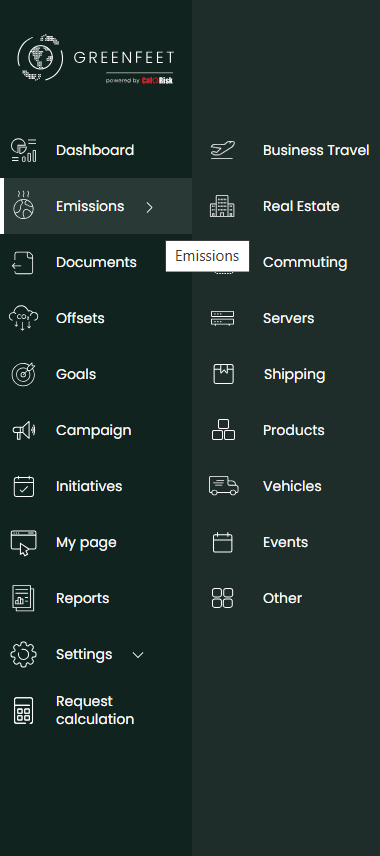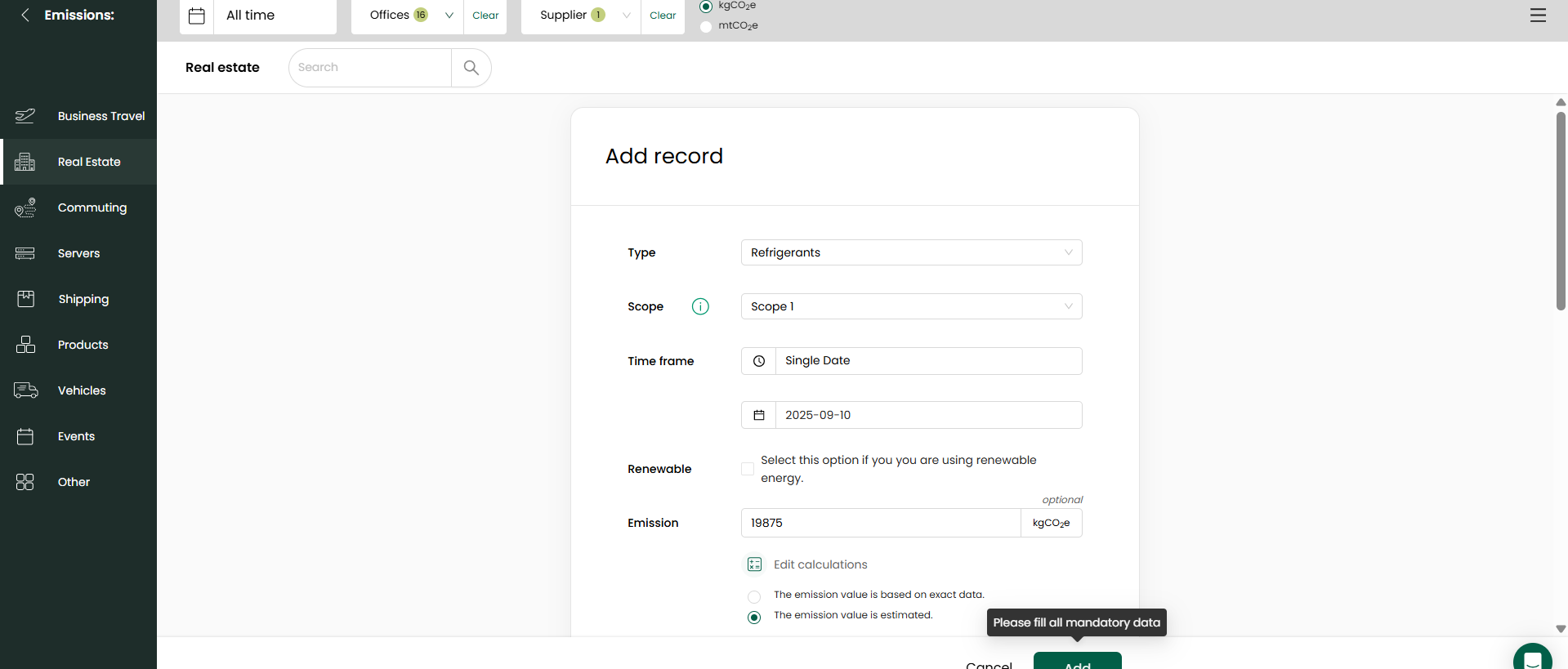Creating Emissions Records
To calculate your business emissions you first need to create emissions records
In order to calculate your business' carbon emissions footprint you first need to create emissions records. Below is a comprehensive guide to creating emissions records.
As for each emission category, the related subcategories, and how to use the built-in calculators, all of that can be found in the following guides to help make your calculations a breeze!
Adding a new emissions record
Click the Emissions section in the Side Panel and select the appropriate category. There are many subcategories within each tab, such as heating and electric for real estate.

After selecting an Emission category, click the Add Record button. And fill in the following fields:

- Scope: The scope of a record will automatically be selected for you. See below for a detailed definition of Scope 1, Scope 2 and Scope 3.
- Type: In the Type dropdown select the appropriate subcategory, e.g. Buildings Heat
- Timeframe: For the timeframe select the reporting Timeframe, e.g. Quarter, Year or a specific Date range. This should be based on the data you have, e.g. monthly bill or a yearly overview.
- Emission: Enter the emissions, if you already have emissions value in co2 equivalent (co2e) you can just enter the emission directly. Note: many utility bills now outlined the exact amount of co2e produced as a result of using a service (e.g. electricity bills). If you don't have emissions data click the Calculate it for me text to bring up a subcategory specific calculator.
- Calculate it for me: Fill in the relevant fields in the calculator window such as amount of fuel used to heat an office. Next, select 'Calculate' to add the data to form. (Note you can find more details on how to use each specific calculator in our 'Calculators' section).
- Primary vs. Secondary data: If using secondary data select the radio button that states: "The emission value is estimated"
- Office(s): Select the office associated with the record. Note you can distribute the emissions across multiple offices also.
- Title: Enter a Title to identify the record, e.g. 2021 - Q1 Building heat
- Documentation: attach activity data records that you have uploaded in our 'Documents' section to a given record such that you can easily reference primary data that your calculations are based on. For more details on how to use our 'Documents' section see here.
- Description: Here you can provide additional information for your records as necessary.
Additional notes on scopes
The GreenHouse Gas protocol corporate standard categorizes a company's emissions into three different 'scopes':
- Scope 1 - All Direct Emissions from the activities of an organization or under their control. Including fuel combustion on site such as gas boilers, fleet vehicles and air-conditioning leaks.
- Scope 2 - Indirect Emissions from electricity purchased and used by the organization. Emissions are created during the production of the energy and eventually used by the organization.
- Scope 3 - All Other Indirect Emissions from activities of the organization, occurring from sources that they do not own or control. These are usually the greatest share of the carbon footprint, covering emissions associated with business travel, procurement, waste and water.

Updated about 2 months ago